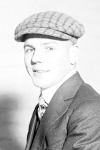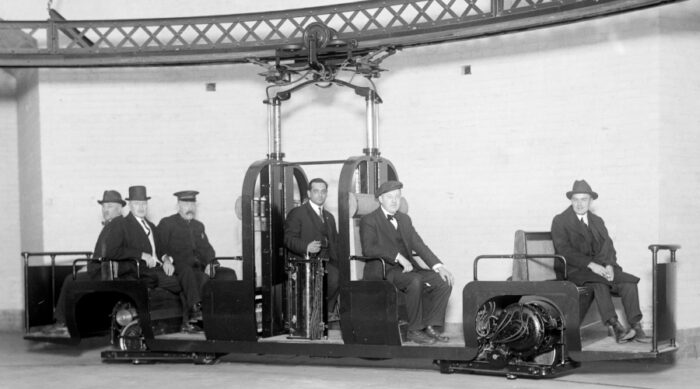
I wrote last week about the cars that used to traverse the tunnel under Constitution Avenue that connected the Senate Office Building and the Capitol. The system had not really been the first choice of the Senators, but had been selected to save money. Unsurprisingly, there soon was a push for a new transportation system.
Only three years after the cars had been installed, the New York Tribune announced that the “shortest and most exclusive electric railway in the world is being installed.” There was only one car, that had room for “12 senators or 36 pages.” Whether this means that 12-year-olds were a lot smaller back then or that the senators were a lot fatter was not further addressed.
There had been some attempt to have the subway run throughout the basement of the Senate Office Building all the way to “somewhere near the Capitol dome” but, in the end, it ran between the same two endpoints used by the cars.
The Tribune article ended with a description:
The little car will run on a single rail below, but will be balanced by a broad rail in the roof of the tunnel, from which the power will be gathered by means of a “hinge arm.”
Like the cars before them, the monorail required an operator, such as John W. Hinkel, who can be seen in the above picture.
Not everyone was a fan of the new technology. The major complaint was the noise it made, and so feelers were put out to automobile manufacturers for new cars. When none were able to provide an adequate replacement, it was decided to stick with the old system.

A 1940 article in the Washington Post gave some good background to the use of the monorail, as part of a sketch of Joseph R. Hunt, who had been an operator for 13 years. Most importantly, he knew exactly when to leave the station – the moment a senator stepped on board. Unless the Vice President was also in sight, then he would wait. Anyone else would have to scramble or be left behind. Hunt also knew exactly what the bell system set up in the Senate meant, when he would position himself at one end or the other, knowing that there would soon be a rush of business.
Demanding, too, are three and seven bells, respectively, the signals for “executive session” and “executive session behind closed doors.” It is at times like these that Hunt whips his little car over his single rail at greatest speed. His record for the trip is 32 seconds, his average 45.
It was only a year before this article was published that the old electric cars, which had been sitting idle for 27 years, were sold. Fortunately, the buyer, Lee D. Butler, knew what to do with them, with one sent to the Franklin Institute, and the other to the Studebaker Museum in South Bend, Indiana. While the latter still remains there, the former had a slightly more circuitous route to the Swigart Museum. In 2017, it was restored to running form, and took an award at the Elegance at Hershey.
